Steeped in the tranquility of Karnataka’s landscapes, the ancient towns of Halebidu and Belur whisper tales of India’s cultural tapestry and architectural mastery. Distant from the urban clamor, these hidden treasures invite exploration, promising a journey through centuries of art, history, and spiritual traditions.
Halebidu, once the crowned capital of the Hoysala Empire, and Belur, its artistic twin, boast a dazzling collection of temples, sculptures, and architectural wonders that echo with the stories of forgotten eras. From stones intricately carved to majestic shrines embellished with ornate artistry, every corner here exudes a sense of grandeur and mystery, beckoning visitors to unlock the secrets of the past.
How to reach:
Air:
Halebidu and Belur are most easily accessed by flying into Kempegowda International Airport in Bangalore, roughly 220 kilometers away. Taxis and buses are readily available at the airport for the 4-5 hour journey, depending on traffic.
Train:
Hassan railway station, 32 kilometers distant, is the closest rail link to Halebidu and Belur. Regular trains connect Hassan to major cities like Bangalore, Mysore, and Mangalore. Taxis and buses are available at Hassan station for the final leg to your destination.
Road:
An extensive road network connects Halebidu and Belur to surrounding towns and cities. State-run and private buses run frequently from Bangalore, Mysore, and Mangalore. For a more flexible journey, consider driving yourself or hiring a cab/taxi.
Getting Around:
Within Halebidu and Belur, auto-rickshaws and cycle-rickshaws are the preferred modes of local transport. To truly immerse yourself in the charm of these ancient towns, explore them on foot and wander the historic streets and admire the monuments at your own pace
Best time to visit:
Winters (October to February):
Winter emerges as the peak tourist season across Karnataka, encompassing Halebidu and Belur. This period boasts mild temperatures and minimal rainfall, creating perfect conditions for sightseeing, temple visits, and outdoor adventures. Pack light woollens for evenings, especially in December and January, as the temperature dips slightly.
Summers (March to May):
Summer in Karnataka, particularly between March and May, can be quite hot and humid. While daytime excursions might be less enjoyable due to soaring temperatures, early mornings and evenings offer suitable windows for exploration. Sunscreen, hats, and staying hydrated become crucial during this time.
Monsoon (June to September):
The monsoon season, spanning June to September, transforms the landscape into a tapestry of lush greenery with heavy rainfall. While rain adds a scenic charm to Halebidu and Belur, it can also disrupt travel plans and outdoor activities. If you embrace occasional showers and wish to witness the region’s natural beauty at its peak, consider a monsoon visit. Just be prepared for potential transportation delays and carry appropriate rain gear.
Attractions:
Hoysaleswara Temple (Halebidu):
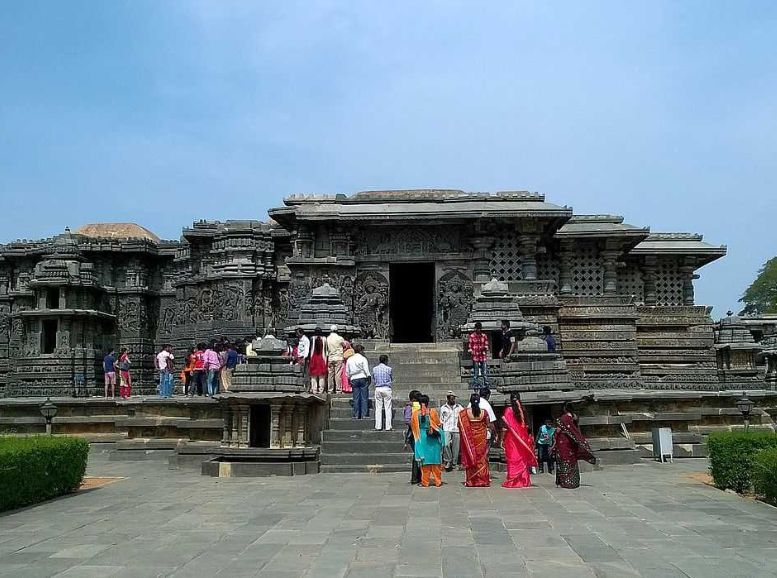
A step into Halebidu’s Hoysaleswara Temple is a portal to a world where stone breathes with life. This architectural marvel, dedicated to Lord Shiva, stands as a profound testament to the Hoysala dynasty’s unparalleled stone craftsmanship. Every inch of the temple’s exterior explodes with intricate carvings – a mesmerizing tapestry of gods, goddesses, mythical creatures, and scenes woven from the grand Hindu epics. The meticulous attention to detail is breathtaking, each sculpture whispering its own unique tale. As sunlight dances across the intricately carved walls, visitors stand in awe, humbled by the sheer skill and unwavering dedication of the artisans who brought this masterpiece to life centuries ago. The Hoysaleswara Temple transcends its purpose as a place of worship, transforming into a living testament to India’s immeasurably rich artistic heritage.
Kedareshwara Temple (Halebidu):
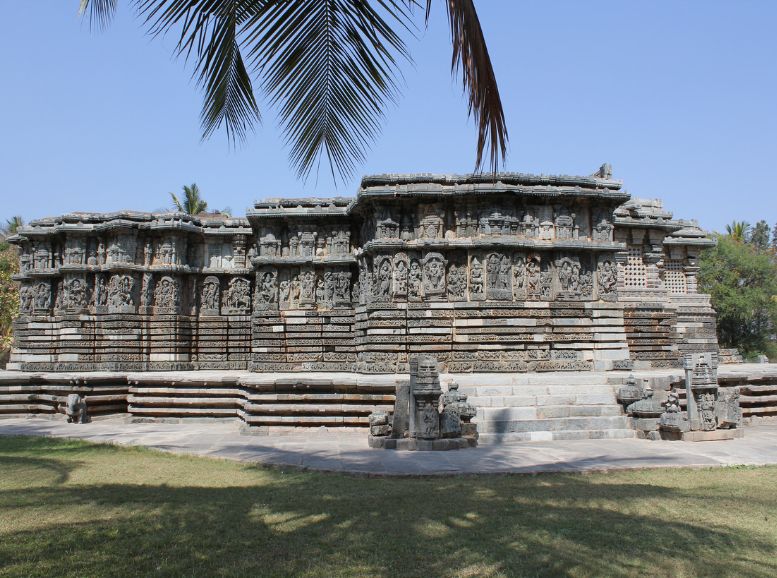
Halebidu’s Kedareshwara Temple, nestled amidst serene landscapes, radiates tranquility and timeless beauty. Dedicated to Lord Shiva, this ancient sanctuary is a hidden gem awaiting exploration by travelers seeking spiritual solace and enlightenment. As visitors approach the temple complex, intricately carved pillars greet them, each whispering tales of devotion and divine grace. Within the sanctum sanctorum lies a lingam, the symbolic representation of Lord Shiva, where devotees offer prayers with reverence and unwavering faith. Encircling the main shrine are smaller shrines dedicated to various deities, weaving a sacred ambience that resonates with the echoes of centuries-old prayers. For those yearning to delve into Karnataka’s rich tapestry of cultural heritage and architectural splendor, the Kedareshwara Temple stands as a timeless testament to the region’s glorious past.
Chennakesava Temple (Belur):

Belur’s Chennakesava Temple enthralls visitors with a symphony of stone, a captivating display of architectural grandeur and artistic finesse. Dedicated to Lord Vishnu, this marvel of Hoysala architecture is a celebration of beauty, devotion, and the enduring spirit of craftsmanship. Every inch of the temple is adorned with intricate sculptures, a mesmerizing tapestry woven with celestial beings, mythical creatures, and scenes whispered from Hindu mythology. The outer walls transcend time and space, narrating tales of gods and goddesses, warriors and saints. As visitors meander through the temple complex, they are transported to an era of artistic brilliance and profound spiritual enlightenment. The Chennakesava Temple isn’t merely a monument; it’s a living legacy, a testament to India’s rich cultural heritage and the unwavering ingenuity of its builders.
Veera Narayana Temple (Belavadi, near Halebidu):
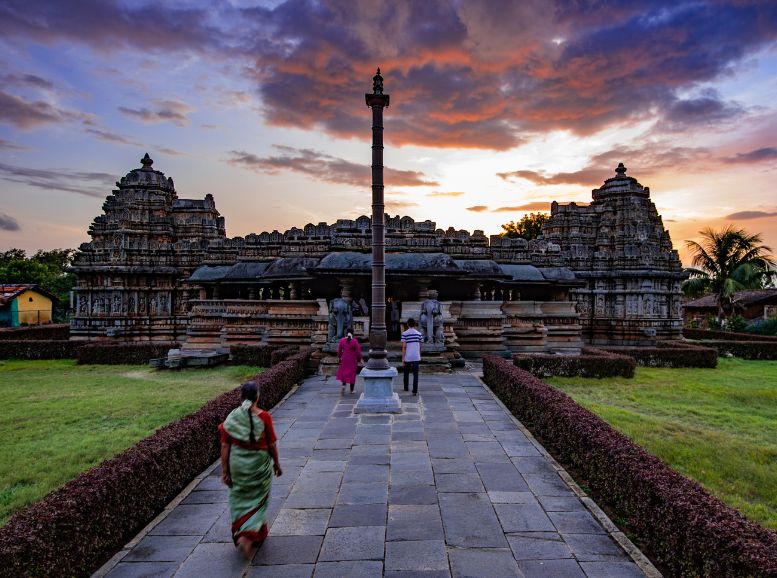
In the quaint village of Belavadi lies a treasure waiting to be unearthed by the curious traveler – the Veera Narayana Temple. This architectural marvel, built during the Hoysala era, showcases the era’s exquisite craftsmanship and artistic mastery. As visitors approach the temple, a majestic entrance adorned with intricate carvings and decorative motifs welcomes them. The heart of the temple, the main sanctum, houses a magnificent idol of Lord Vishnu in his Veera Narayana form, radiating an aura of divine grace and tranquility. Surrounding this central chamber are smaller shrines dedicated to various deities, each adorned with captivating carvings and sculptures. The temple’s serene atmosphere and historical significance make it a must-visit destination for those seeking to delve into the captivating mysteries of Karnataka’s rich cultural heritage.
Jain Basadi (Halebidu and Belur):
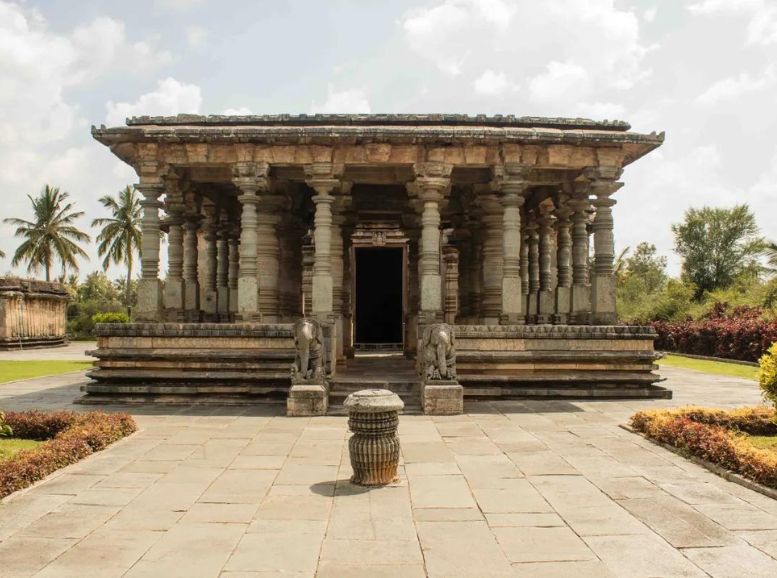
Halebidu and Belur extend beyond their magnificent Hindu temples, boasting a rich Jain heritage that stretches back centuries. Scattered throughout these towns, the Jain Basadis stand as testaments to a flourishing Jain community that once thrived here. Though smaller in scale compared to their Hindu counterparts, these temples are no less awe-inspiring in their architectural brilliance and artistic finesse. Visitors can marvel at the intricate carvings adorning pillars, ceilings, and sculptures, each whispering tales of Jain saints, deities, and symbolic motifs. The tranquil ambiance of these Basadis offers a peaceful haven for introspection and spiritual contemplation. Here, visitors are invited to delve into the teachings of Jainism, its philosophy of non-violence, compassion, and enlightenment. Whether you’re a history enthusiast, an architecture aficionado, or a spiritual seeker, exploring the Jain Basadis of Halebidu and Belur promises to be a deeply rewarding experience.
Museum at Belur (Belur):
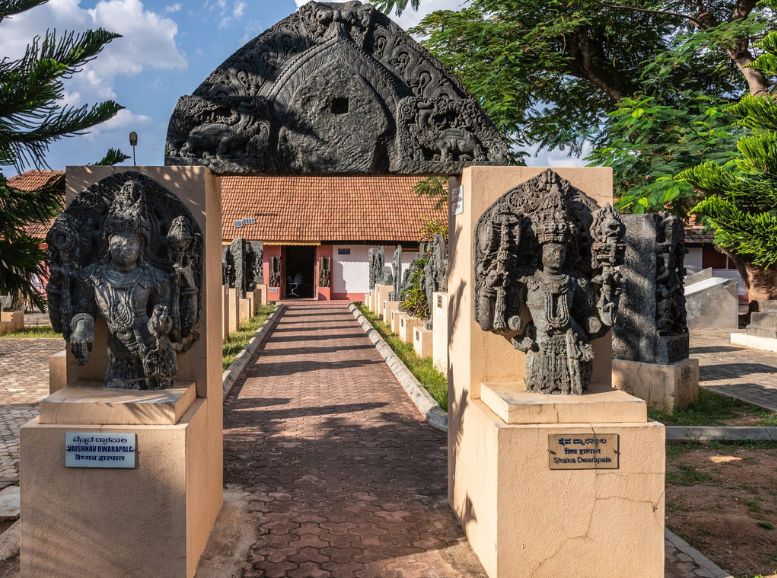
Nestled beside the magnificent Chennakesava Temple complex in Belur lies a treasure trove for history buffs and art lovers – the museum. Though unassuming from the outside, this museum within a modest building holds a captivating collection of sculptures, artifacts, and inscriptions whispering tales of the Hoysala era. Stepping inside feels like embarking on a captivating journey through time. Visitors are greeted by a mesmerizing display of stone carvings, metalwork, and ancient relics, each artifact a silent storyteller. These remnants of bygone eras offer unique insights into the region’s cultural, artistic, and historical evolution.
From intricately carved idols of deities to exquisite metal sculptures and decorative motifs, the museum showcases the rich artistic heritage of Karnataka in all its glory. Exploring this collection is not merely an educational experience; it’s a spiritual journey fostering a deeper appreciation for the craftsmanship and devotion that breathed life into these timeless masterpieces.
Yagachi Dam (Belur):
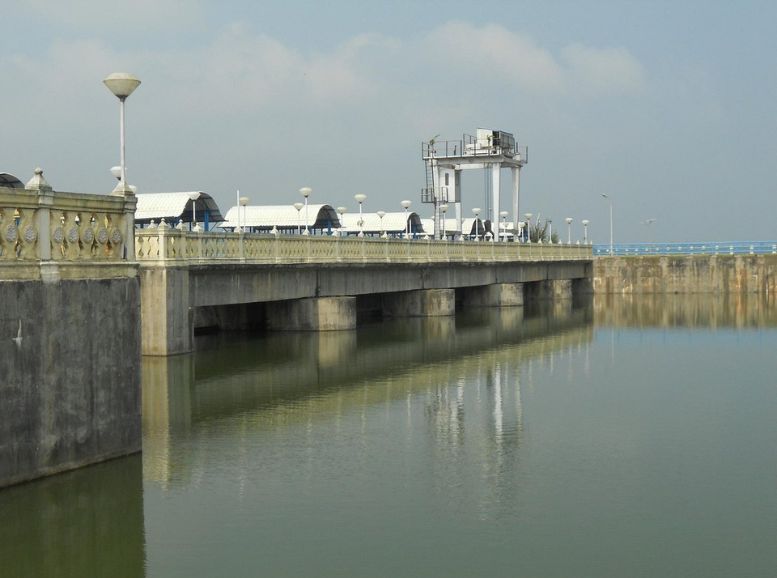
Belur’s timeless heritage embraces a serene oasis of tranquility – the Yagachi Dam. Built across the Yagachi River, this picturesque dam offers a scenic escape for nature lovers and adventure seekers alike. Lush greenery and rolling hills frame the dam, creating the perfect backdrop for picnics, leisurely walks, or exhilarating boating adventures. Visitors can bask in the tranquility of the surroundings, witnessing the mesmerizing interplay of light and shadow dance on the reservoir’s shimmering waters. The rhythmic flow of the river, the gentle rustle of leaves, and the melodious song of birds create a symphony of sights and sounds that soothe the soul and rejuvenate the spirit.
Belur and Halebidu Architecture Tour:
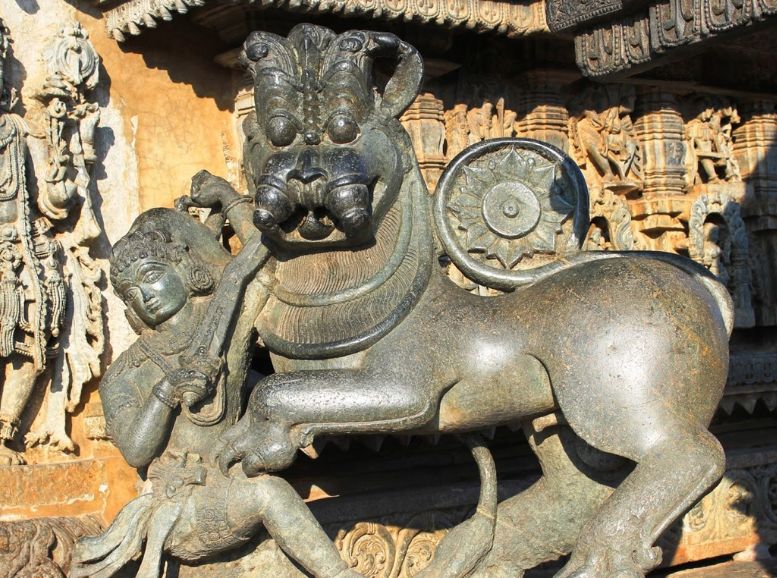
Unveil the mysteries of Karnataka’s rich cultural heritage on a captivating guided architecture tour through the ancient towns of Belur and Halebidu. Led by knowledgeable guides, these tours offer an unparalleled opportunity to delve into the intricate details and historical significance of the region’s architectural marvels.
From the majestic temples of Belur, adorned with exquisite sculptures, to the captivating artistry of Halebidu, each site whispers a tale of artistic brilliance and spiritual devotion. Immerse yourself in the intricate carvings, learn about the architectural techniques employed by the masterful Hoysala artisans, and gain a deeper understanding of the cultural influences that shaped the region’s architectural landscape.
Local Experiences:
- Heritage Walks:
Immerse yourself in the rich history and culture of Halebidu and Belur with guided heritage walks through the ancient streets and monuments . Explore hidden gems, interact with locals, and unravel the mysteries of the past as knowledgeable guides share fascinating anecdotes and insights about the region’s heritage.
- Artisan Workshops:
Get a glimpse into traditional craftsmanship with visits to artisan workshops in Halebidu and Belur . Witness skilled artisans at work as they carve intricate sculptures, weave vibrant textiles, and create beautiful handicrafts using age-old techniques passed down through generations.
- Temple Festivals:
Experience the vibrant colors and festive fervor of temple festivals celebrated with great pomp and splendor in Halebidu and Belur . Join the locals in traditional rituals, cultural performances, and religious processions as the towns come alive with music, dance, and devotion.
- Culinary Delights:
Indulge your taste buds with authentic Kannada cuisine at local eateries and roadside stalls in Halebidu and Belur . Savor traditional delicacies like Bisi Bele Bath (a lentil and rice dish), Mysore Pak (a sweet made with gram flour and ghee), and Maddur Vada (a deep-fried lentil snack), prepared with fresh local ingredients and aromatic spices that tantalize the senses.
- Silk Weaving:
Discover the age-old art of silk weaving in Belur, known for its exquisite silk sarees and fabrics . Visit silk weaving centers and witness skilled artisans weave intricate patterns and designs on handlooms, creating beautiful textiles that are cherished for their quality and craftsmanship.pen_spark
- Rural Homestays:
Experience the warmth and hospitality of rural Karnataka with a stay at traditional homestays in Halebidu and Belur . Live like a local as you stay in quaint cottages or heritage homes, participate in farm activities, and savor homemade meals prepared with love by your gracious hosts.
- Nature Trails:
Explore the scenic beauty of Halebidu and Belur with nature trails and treks through lush forests, rolling hills, and serene countryside . Discover hidden waterfalls, pristine lakes, and panoramic viewpoints that offer breathtaking vistas of the surrounding landscape.
- Pottery Making:
Unleash your creativity with pottery making workshops in Halebidu and Belur, where skilled potters impart the art of shaping clay into beautiful pottery pieces . Try your hand at the potter’s wheel, mold clay into intricate shapes, and create your own masterpiece to take home as a unique souvenir.
- Cultural Performances:
Enrich your cultural experience with traditional dance and music performances in Halebidu and Belur . Attend classical dance recitals, folk music concerts, and puppet shows that showcase the rich artistic heritage of Karnataka and leave you mesmerized by their beauty and grace.
- Village Visits:
Gain insight into rural life in Karnataka with visits to nearby villages around Halebidu and Belur. Interact with local communities, learn about their customs and traditions, and participate in agrarian activities like farming, cattle rearing, and traditional crafts to experience the authentic essence of village life .
Travel tips:
Plan Your Escape:
Before embarking on your journey, research the best time to visit Halebidu and Belur. Familiarize yourself with local festivals, events, and exhibitions happening during your stay. Plan your itinerary to maximize your experience, avoiding crowds or potential closures.
Dress with Respect:
Halebidu and Belur are steeped in religious significance. When visiting temples and sacred sites, dress modestly. Cover your shoulders and knees. Remove footwear before entering temple sanctums and follow any specific dress codes or guidelines posted at the entrance.
Stay Hydrated:
Karnataka’s weather can get warm, especially during summer. Carry a reusable water bottle and stay hydrated throughout your explorations. Indulge in refreshing coconut water or traditional beverages like sugarcane juice sold by local vendors.
Beat the Sun:
Protect yourself from the sun’s rays with sunscreen, sunglasses, and a wide-brimmed hat or scarf. Seek shade whenever possible, especially during peak sunlight hours, to avoid sunburn and dehydration.
Respect Local Customs:
Be mindful of local customs, traditions, and cultural sensitivities. Respect religious practices, maintain silence within temple premises, and ask permission before photographing people or religious ceremonies.
Explore Beyond the Highlights:
While the Hoysaleswara Temple and Chennakesava Temple are the stars of the show, venture beyond the main attractions. Explore lesser-known sites, hidden gems, and off-the-beaten-path trails scattered throughout the towns. Immerse yourself in the local markets, interact with artisans, and discover the charm of everyday life in rural Karnataka.
A Culinary Adventure:
Tantalize your taste buds with the flavors of Karnataka. Sample local delicacies and regional specialties. From spicy masala dosas and crispy vadas to mouthwatering biryanis and sweet treats like Mysore Pak, the culinary scene offers a diverse array of delights to savor.
Be a Responsible Traveler:
Embrace responsible tourism practices. Minimize your environmental footprint, respect wildlife and natural habitats, and support local communities and businesses. Choose eco-friendly accommodations, dispose of waste responsibly, and contribute positively to the local economy through ethical tourism practices.
Embrace Flexibility:
Maintain an open mind and be prepared for unexpected changes or delays during your travels. Embrace the spontaneity of the journey, be flexible with your plans, and allow yourself to fully immerse in the sights, sounds, and experiences that await you in this captivating region.
Capture the Memories:
Document your experiences! Take photographs, write in a journal, and collect souvenirs. Capture memories of your trip to Halebidu and Belur, cherish the moments shared with loved ones, and reflect on the beauty and significance of your travels long after you’ve returned home.
Conclusion
Unveiling the rich tapestry of Karnataka’s cultural heritage, Halebidu and Belur beckon travelers on a journey through time, culture, and spirituality. Explore majestic temples adorned with intricate carvings, savor the flavors of traditional Kannada cuisine, or find tranquility at the Yagachi Dam. With Xplro.com [your travel guide website], venture beyond the usual tourist trail and delve into artisan workshops, serene nature trails, and vibrant cultural experiences. Halebidu and Belur leave an indelible mark, a newfound appreciation for Karnataka’s cultural richness and spiritual legacy. Plan your unforgettable adventure today at Xplro.com.
FAQs
1. What are the typical opening hours of the temples in Halebidu and Belur?
- The temples in Halebidu and Belur generally open at around 6:00 AM and close at approximately 8:00 PM. However, visitors are advised to verify the specific opening hours of each temple as they may vary.
2. Are there any admission fees to access the temples in Halebidu and Belur?
- Yes, there is usually a nominal admission fee required to enter the main temples in Halebidu and Belur. These fees may differ for domestic and international visitors. Some smaller temples or attractions may offer free entry.
3. Can visitors hire guides at the temples to learn about their history and significance?
- Certainly, licensed guides are available at the temples in Halebidu and Belur to offer comprehensive insights into their history, architecture, and cultural significance. Engaging a guide can enrich the visitor experience and provide deeper understanding of the sites.
4. Is photography permitted inside the temples?
- Photography is generally allowed in the outer areas of the temples in Halebidu and Belur. However, it’s essential to adhere to any restrictions on photography inside the sanctum sanctorum or specific areas where it may be prohibited.
5. What is the most convenient way to travel from Bangalore to Halebidu and Belur?
- The easiest way to reach Halebidu and Belur from Bangalore is by road. Visitors can drive or hire a taxi for an approximately 4-5 hour scenic journey. Alternatively, regular bus services operate from Bangalore to Halebidu and Belur.
6. Are there accommodation options available in Halebidu and Belur?
- Yes, various accommodation options, including hotels, guesthouses, and homestays, are available in Halebidu and Belur. It’s advisable to book accommodation in advance, particularly during peak tourist seasons.
7. What is the prevailing weather like in Halebidu and Belur throughout the year?
- Halebidu and Belur experience a tropical climate, with hot and humid summers and mild and pleasant winters. The optimal time to visit is during the winter months from October to February, when the weather is most conducive for sightseeing.
8. Are there local markets or shopping opportunities in Halebidu and Belur?
- Yes, there are local markets and shops in Halebidu and Belur where visitors can purchase souvenirs, handicrafts, and traditional artifacts. Notable items include locally-made silk sarees, sandalwood carvings, and other indigenous products.
9. Are there nearby attractions or day-trip destinations from Halebidu and Belur?
- Indeed, there are several nearby attractions and day-trip destinations from Halebidu and Belur, such as Shravanabelagola, Sringeri, and Kemmanagundi. These places offer additional opportunities for exploration and sightseeing.
10. Are vegetarian dining options available in Halebidu and Belur?
- Absolutely, numerous restaurants and eateries in Halebidu and Belur offer delicious vegetarian cuisine, including traditional South Indian dishes like dosas, idlis, and vadas. There is also a variety of local delicacies and international cuisines to suit various preferences.
11. What safety precautions should travelers take when visiting Halebidu and Belur?
- While Halebidu and Belur are generally safe destinations, visitors are advised to exercise standard safety precautions such as safeguarding valuables, staying hydrated, and respecting local customs and regulations. It’s advisable to avoid wandering alone in secluded areas, particularly after dark.
12. Are medical facilities or pharmacies accessible in Halebidu and Belur?
- Yes, there are medical facilities, clinics, and pharmacies available in Halebidu and Belur to cater to the healthcare needs of visitors. Travelers are recommended to carry a basic first-aid kit and any necessary medications during their trip.





